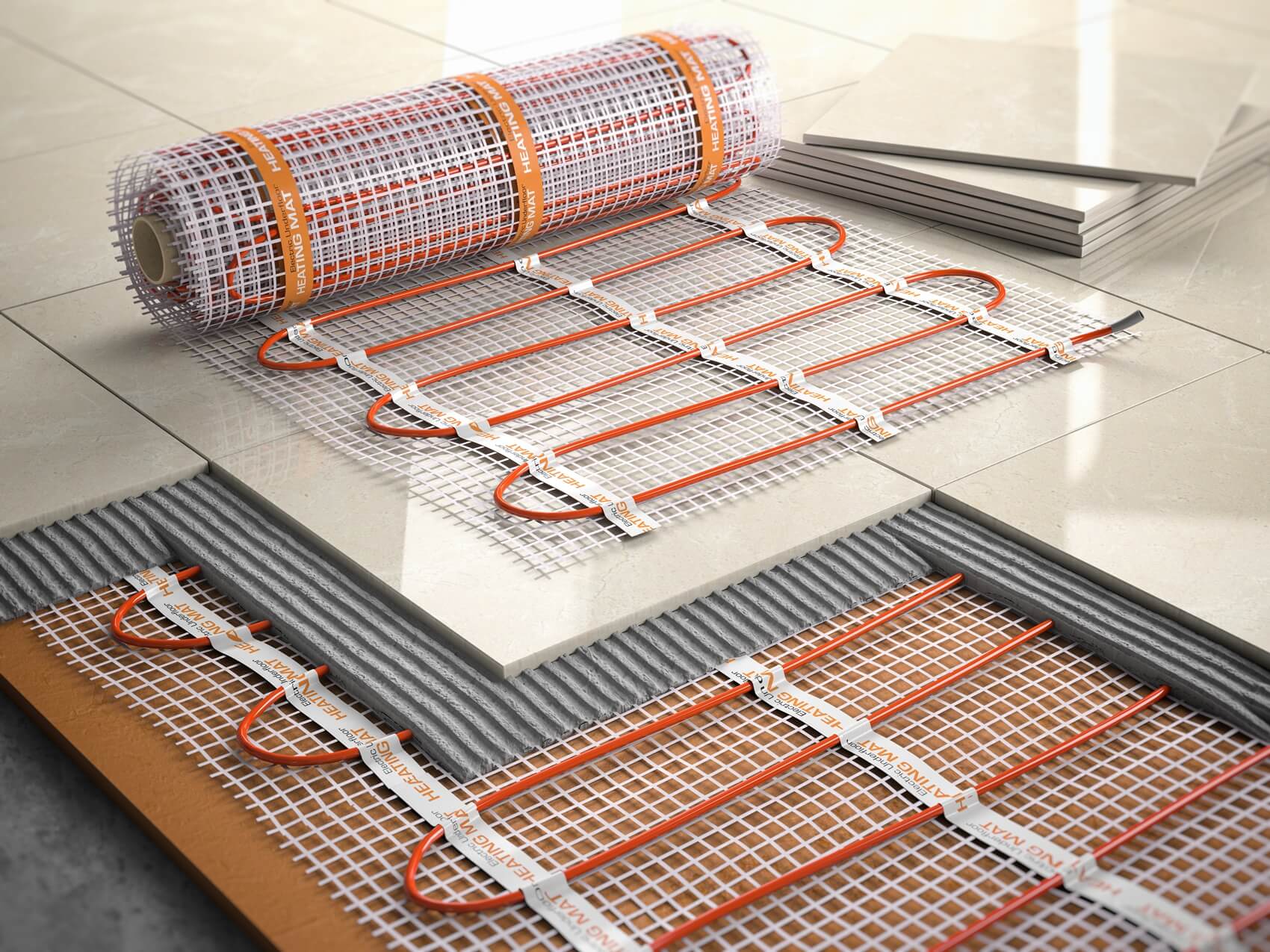Opting for underfloor heating for your Berkshire property
Are you planning to get underfloor heating installed on your property? There are two options to choose from water-based or electric floor heating. In a water-based heating system, pipes use hot water that flows through them and is pumped from a boiler. In an electrical heating system, either a heating mat with cables or directly heating cables run beneath the flooring.

Choose the right heating
Since using electrical underfloor heating can be expensive, choosing a water-based heating system will prove to be more economical.
While a water-based heating system installation is more expensive than an electric system, in the long term the costs even out. In comparison to conventional radiators, underfloor heating is far more cost-efficient and effective in the long term.
Unlike radiators, which can have cold spots in certain parts of the property, underfloor heating spreads the heat evenly across. With a radiator, the areas closest to it are heated, while more distant parts of the room feel colder. With underfloor heating, the generated heat spreads through the room evenly without any area overheating. All that needs to be done is set the thermostat’s temperature and that will be constant throughout the room.
A major advantage of installing underfloor heating is there is hardly any maintenance needed after installation. Unlike electrical systems that need servicing regularly, a water-based system only needs to be checked occasionally to ensure everything is working smoothly. Another benefit with underfloor heating is they offer more space, unlike radiators that take up space on the wall of a room. The only thing to be aware of with underfloor heating is there is a restriction to place flat bottomed furniture over an area where the heating cable passes as it will restrict the flow of air and lead to thermal blocking. Similarly, if carpets or rugs are covering the floor, they should not exceed a tog value of 2.5.
Using a radiator leads to air circulating in the room with dust particles too. With underfloor heating, there is no such issue making it beneficial for those suffering from any kind of allergies.
Any underfloor heating system requires screeding, and if you need liquid screeding it should be of a depth of around 30mm, to ensure it covers the pipes. It is less than cement or sand screeds that generally are 75mm in depth. Consequently, less time is required to heat a room that leads to energy conservation. An extra benefit of using liquid anhydrite screeds is they offer better thermal conductivity which leads to lower energy costs.
Get liquid screeds in Berkshire
For home or business owners that require liquid screeds in Berkshire, Winchester, Basingstoke, Reading, Windsor, Henley, Hampshire, Wiltshire get in touch with Fast Flowing Screeds for a free quote today! Our team of experts offers services like pumped flowing screeds, screeding membrane installation, floor insulation, floor levelling compound, etc. For any of our specialised services, call us on our freephone at 01635 298 315 or drop us an email at info@fastflowingscreeds.co.uk now! Our team will get in touch with you asap.
 Review Us!
Review Us!